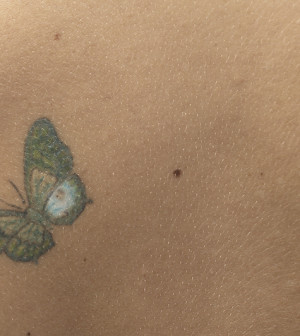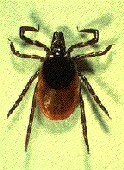- How Daily Prunes Can Influence Cholesterol and Inflammation
- When to Take B12 for Better Absorption and Energy
- Epsom Salts: Health Benefits and Uses
- See What Saffron Can Do for Sleep and Heart Health
- 6 Common Mistakes to Avoid Before Your Physical
- Can Sweating Really Help You Beat a Cold?
- Strengthening Your Relationship: Practical Strategies
- Skip Storing This Everyday Product in the Fridge Door
- Green Tea + B3 Pairing May Boost Brain Health
- Navigating Your Midlife Crisis: Embracing New Possibilities
Preventing Tick Bites


Hikers, campers, gardeners and other Americans are flocking outdoors to enjoy the warm weather, and they need to take steps to protect themselves from tick bites, cautions an expert.
Ticks love the warm weather, too, and can transmit Lyme disease and other types of infections to people through their bite. Fortunately, there are a number of steps you can take to prevent tick bites, according to Stephen Wikel, professor and chair of the department of medical sciences at Quinnipiac University in Hamden, Conn.
Wear long pants and tuck them in to high socks. It’s also a good idea to wrap duct tape — sticky-side out — around where your pants and socks meet. The tape will trap ticks that try to crawl onto you.
Adults should use an insect repellant that contains less than 40 percent DEET. But, children should use a repellant with no more than 30 percent DEET, Wikel said. Another option is to buy clothing treated with insect repellant. Such products can be bought online and in sporting goods shops.
Reduce the tick threat around your home by eliminating habitats that attracts rodents, deer and other tick-carriers. Keep your lawn trimmed and use wood chips, mulch or gravel to eliminate tall grasses and create barriers between the woods and your home.
It’s also a good idea to get rid of wood piles and stones that provide shelter for tick-carrying mice, chipmunks and squirrels, Wikel advised.
After being outdoors, do a thorough check for ticks. If you find one, gently lift it with thin forceps or tweezers, and use a magnifying glass to see what you are doing. Your goal is to remove the tick intact.
It’s important to know what type of tick you’re dealing with. You can do this by placing it in a Ziploc bag and bringing the tick to your doctor or local health department, Wikel said.
Be sure your dog or cat wears a flea collar or gets anti-flea/tick treatments, which are highly effective in protecting pets against ticks. Check your pet for ticks when they come in from outdoors so ticks don’t crawl off your pets and on to you.
You won’t always know if you’ve been bitten by a tick. A bulls-eye rash indicating a Lyme disease infection appears less than 60 percent of the time. Symptoms of Lyme disease include fever, headache and fatigue, according to Wikel.
Left untreated, the infection can spread to the joints, heart or nervous system. Early treatment with antibiotics can cure Lyme disease, he said.
More information
The U.S. Centers for Disease Control and Prevention has more about ticks.
Source: HealthDay
Copyright © 2026 HealthDay. All rights reserved.










